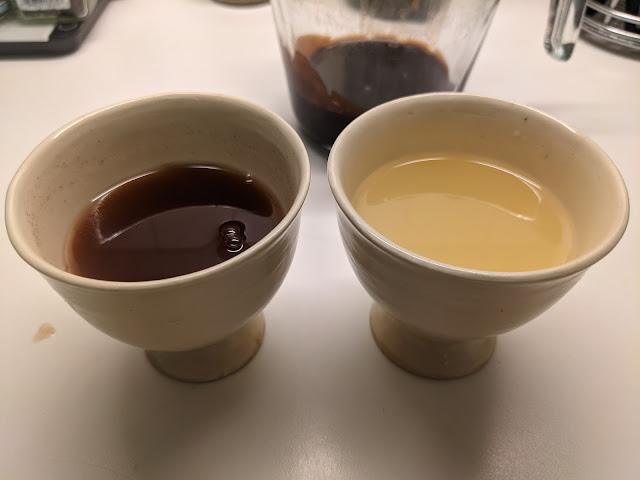Lumpy Yeast Cake Wine: A Recipe
I haven't tried it yet, although I have purchased some millet and some commercial yeast balls to give it a try, and I've signed up for the arts and sciences display at Pennsic, so I'd better have something to show!
I'm assuming that one dan (石) is 100L, one dou (斗) is 10L, and that one hu (斛) is 50L.
Lumpy Yeast Cake Wine
A dry, strong millet wine.
For vessels totalling 7000L. Scale down (or up, for the adventurous) as appropriate.
Ingredients:
- 900L of Proso millet (Panicum miliaceum), divided as follows into seven charges:
- 200L
- 170L
- 140L
- 110L
- 100L
- 90L
- 90L
- Additional perhaps 100L millet on standby to adjust quantities during brewing.
- 130L of lumpy yeast cakes (1/7 the amount of grain)
- 400L water (this might actually be seven times this (2800L), but 400L is the most likely from the text), plus additional water for steaming the millet.
Instructions:
- Soak the yeast cakes for seven to eight days, or until they start to bubble, then break, smash or file them into fine pieces.
- When the yeast cakes are ready, steam the first charge twice [It's unclear what the steaming method is. Hopefully more translations, perhaps of the food section, will add more clarity, but pilaf-style steaming seems likely]. Spread the steamed millet out to cool on a bamboo mat or a clean dishcloth, and break up any large chunks. Divide it evenly among your fermentation vessels corresponding to their relative volumes.
- Once the millet is cool, add it to your cleaned, sanitized fermentation vessel(s) along with the water. Place the vessel in a cool dark place and cover the opening with a piece of fabric.
- Wait 12 hours, and agitate the mass of millet. The wine should be think and turbid.
- After another approximately 12 hours, repeat stages 2-4 with the second charge.
- Continue repeating stages 2-4 with each following charge, one a day. Taste before adding each charge. If the liquor tastes thin because the yeast is working very strongly to ferment it, you may add the previous charge's amount instead of the current charge's, but do not go above 60L more than the previous charge.
- After adding all seven charges, it should stop fermenting after three to five days. If it tastes done, it is. Otherwise, add another 30-40L of millet, and give it another several days. If it still doesn't taste strong enough, add another 20-30L, and give it another several days.
The wine is traditionally made in early April and should last into the summer.
This work is licensed under a Creative Commons Attribution-ShareAlike 4.0 International License.



Comments
Post a Comment